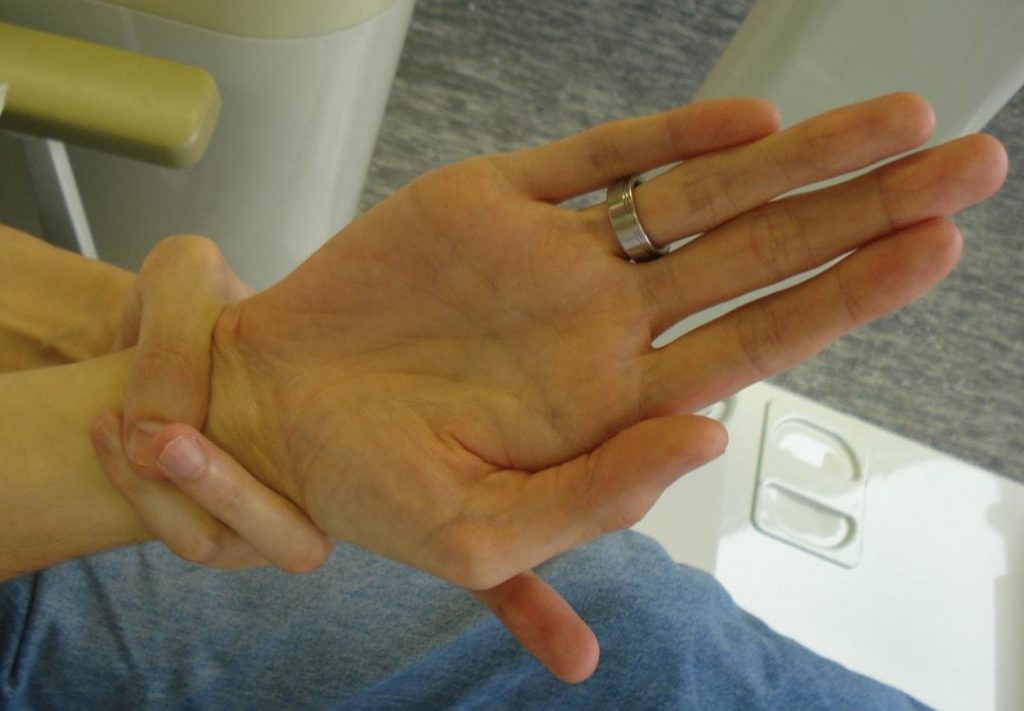MARFAN SYNDROME
Marfan syndrome (MFS) is a genetic illness that affects connective tissues throughout the body, impacting the bones, muscles, ligaments, organs, skin, and blood vessels.
People with MFS can be tall and thin with long limbs and flexible joints. MFS symptoms range from mild to severe and life-threatening.
There is no cure for MFS, but treatments are available to prevent or delay complications.
PREVALENCE AND STATISTICS
As reported by the U.S. National Library of Medicine, about 1 in 5,000 people worldwide have MFS, making it a rare disorder.
MFS affects all genders, races, and ethnicities equally. The most significant risk factor for the disease is genetic (if a parent has MFS); however, 25% of people with MFS do not have a family history of the disease.
CAUSES
MFS is induced by a mutation in the FBN1 gene, which encodes the fibrillin-1 protein. Fibrillin-1 makes connective tissue fibers (called microfibrils) elastic and stretchy.
Fibrillin-1 is found throughout the skin, blood vessels, and ligaments connecting bones and joints. Multiple FBN1 mutations are known to cause MFS.
A mutated fibrillin-1 protein forms fewer microfibrils. Because microfibrils bind to growth factors, fewer microfibrils mean a higher concentration of free growth factors.
This leads to overgrowth and tissue instability, which is why people with MFS tend to be tall with long extremities.
MFS is an autosomal dominant disorder, meaning a person only needs one copy of the faulty gene to get the syndrome.
If a parent has MFS, there is a 50% chance that each of their children will also have Marfan syndrome.
Although most people with MFS inherit it from their parents, sometimes a new mutation occurs in a developing embryo that can cause MFS in people with no family history of the disorder.
SYMPTOMS
Signs and symptoms of MFS vary widely and include:
- A tall, thin build
- Long limbs and extremities
- A torso that sinks in or sticks out
- A long head with deep-set eyes
- Eye problems (blurred vision, extreme nearsightedness)
- Flat feet
- Flexible joints
- Heart palpitations or murmur
- Pain (significantly lower back pain)
- Scoliosis (curving of the spine to the sides)
- Stretch marks not caused by weight gain or loss (on the lower back, buttocks, thighs, shoulders, breasts, and abdomen)
- Weak, crowded teeth that are more likely to break or have cavities
- A high, arched mouth palate
Complications
Other possible complications of MFS include:
- Eye problems: retinal detachment, cataracts (cloudiness in the eye), glaucoma (high eye pressure)
- Dental issues: gum issues or the jawbone becoming unhinged from the skull
- Lung problems: pneumothorax (air between the lung and chest wall) potentially leading to lung collapse, breathing problems due to a sunken chest or scoliosis, bronchiectasis (widened, flabby airways resulting in repeated, serious lung infections), interstitial lung diseases (a group of conditions that cause scarring of the lungs)
- Sleep apnea (interrupted breathing during sleep) due to the shape of the face, oral cavity, or teeth
- Dural ectasia (stretching and weakening of the connective tissue around the spinal cord) leading to lower back pain, numbness in the legs, and headaches
The most serious complications involve the heart and include:
- Arrhythmia (an irregular heartbeat)
- Heart valve diseases, including problems with the aortic and mitral valves that can lead to heart failure
- Mitral regurgitation (blood flows backward into the left atrium because the mitral valve becomes floppy and unable to form a tight seal)
- Aortic aneurysm (a weakened and widened aorta), possibly leading to aortic dissection (tearing on the inner wall of the aorta) or aortic rupture.
MFS and pregnancy
Although many women with MFS have healthy and safe pregnancies, there are some risks.
The most severe risk being aortic dissection due to the increased strain on the heart during pregnancy and delivery.
If a person with MFS has already had an aortic dissection, it is not safe to become pregnant.
Women with MFS who are thinking of becoming pregnant should talk to an obstetrician familiar with MFS and high-risk pregnancies.
DIAGNOSIS
People with a family history of MFS should be screened for the disease via a physical exam, even if they do not have any signs or symptoms.
During the screening, a doctor will ask about any signs and symptoms, personal medical history, and family medical history, then do a physical exam to look for signs of MFS.
Due to the variability of both symptoms and their severity, up to half of all people with MFS do not know they have the disorder.
A set of guidelines called the Ghent criteria helps doctors determine if a person has MFS.
The criteria include sure physical signs of MFS, whether your eye lens has ever moved out of place, the diameter of the aorta, and sometimes genetic testing.
Genetic testing for MFS looks for the mutated FBN1 gene. A blood sample is typically used for testing.
A doctor may perform or order other kinds of tests, including:
- Chest CT scan to look at the heart, aorta, and connective tissue around the spinal cord
- Chest MRI to get a more detailed look at the heart, lungs, and blood vessels
- Echocardiography to see and measure the aorta or check heart valves
- Slit-lamp exam to detect cataracts, a detached retina, or eye lens out of place
TREATMENT
There is no cure for MFS. Treatments can help delay or even prevent complications, especially if they are started early.
MFS treatments include medicines, surgeries, other procedures, regular health care check-ups, and confident lifestyle choices.
Medicines for MFS focus on reducing blood pressure and slowing the heartbeat. They include:
- Beta-blockers
- Angiotensin receptor blockers (ARBs)
- Angiotensin-converting enzyme (ACE) inhibitors
- Calcium channel blockers
Surgeries and procedures to treat MFS complications include:
- Repairing or replacing part of the aorta to prevent tearing or rupture
- Repairing or replacing the mitral valve
- Wearing a brace to prevent scoliosis from worsening
- Repairing severe scoliosis
- Fixing a chest that sinks in or sticks out
- Improving a collapsed lung caused by pneumothorax
- Repairing a detached retina or dislocated lens in the eye
Lifestyle choices can also improve the quality of life of MFS patients, including:
- Eating a heart-healthy diet
- Exercising regularly
- Aiming for and maintaining a healthy weight
- Nonsmoking or stopping if you do smoke
- Managing stress
- Taking care of your mental health (joining a patient support group, talking to a professional)
Receiving regular health care check-ups is key to monitoring the disease and preventing complications. A doctor may recommend the following:
- Routine health care follow-ups
- Regular dental check-ups and getting recommended dental care (braces, more frequent cleanings, etc.)
- Annual check-ups with an orthopedist (bone specialist)
- Regular eye exams
- Regular imaging tests to monitor the heart and aorta
With the advent of recent diagnostics, surgeries, and treatments, the average life span for people with Marfan syndrome has risen from about 40 years in the 1970s to well within the range of today’s expected lifespan, about 60–80 years.
Resources
Websites
Dietz, Hal. “Marfan syndrome.” National Organization for Rare Diseases. 2021. https://rarediseases.org/rare-diseases/marfan-syndrome/ (accessed March 1, 2021).
“Marfan syndrome.” Mayo Clinic. June 22, 2019. https://www.mayoclinic.org/diseases-conditions/marfan-syndrome/symptoms-causes/syc-20350782 (accessed March 1, 2021).
“Marfan syndrome.” MedlinePlus Genetics. August 18, 2020. https://medlineplus.gov/genetics/condition/marfan-syndrome/ (accessed March 1, 2021).
“Marfan Syndrome.” National Heart, Lung, and Blood Institute. November 12, 2019. https://www.nhlbi.nih.gov/health-topics/marfan-syndrome (accessed March 1, 2021).
“What is Marfan Syndrome?” Centers for Disease Control and Prevention. December 3, 2019. https://www.cdc.gov/heartdisease/marfan_syndrome.htm (accessed March 1, 2021).
“What Is Marfan Syndrome?” The Marfan Foundation. https://www.marfan.org/about/marfan (accessed March 1, 2021).
Organizations
Centers for Disease Control and Prevention (CDC), 1600 Clifton Rd, Atlanta, GA, 30333, (800) CDC-INFO (232-4636), http://www.cdc.gov/cdc-info/requestform.html, http://www.cdc.gov .
National Heart, Lung, and Blood Institute (NHLBI), 31 Center Dr, Bethesda, MD, 20892, (877) NHL-BI4U, https://www.nhlbi.nih.gov/.
National Organization for Rare Diseases, 55 Kenosia Ave, Danbury, CT, 06810, (203) 744-0100, Fax: (203) 263-9938, https://rarediseases.org/ .
The Marfan Foundation, 22 Manhasset Ave, Port Washington, NY, 11050, (800) 8-MARFAN, (516) 883-8712, Fax: (516) 883-8040, publicity@marfan.org, https://www.marfan.org/.









